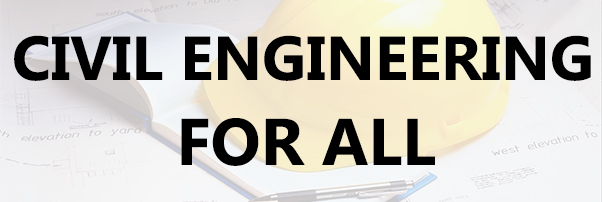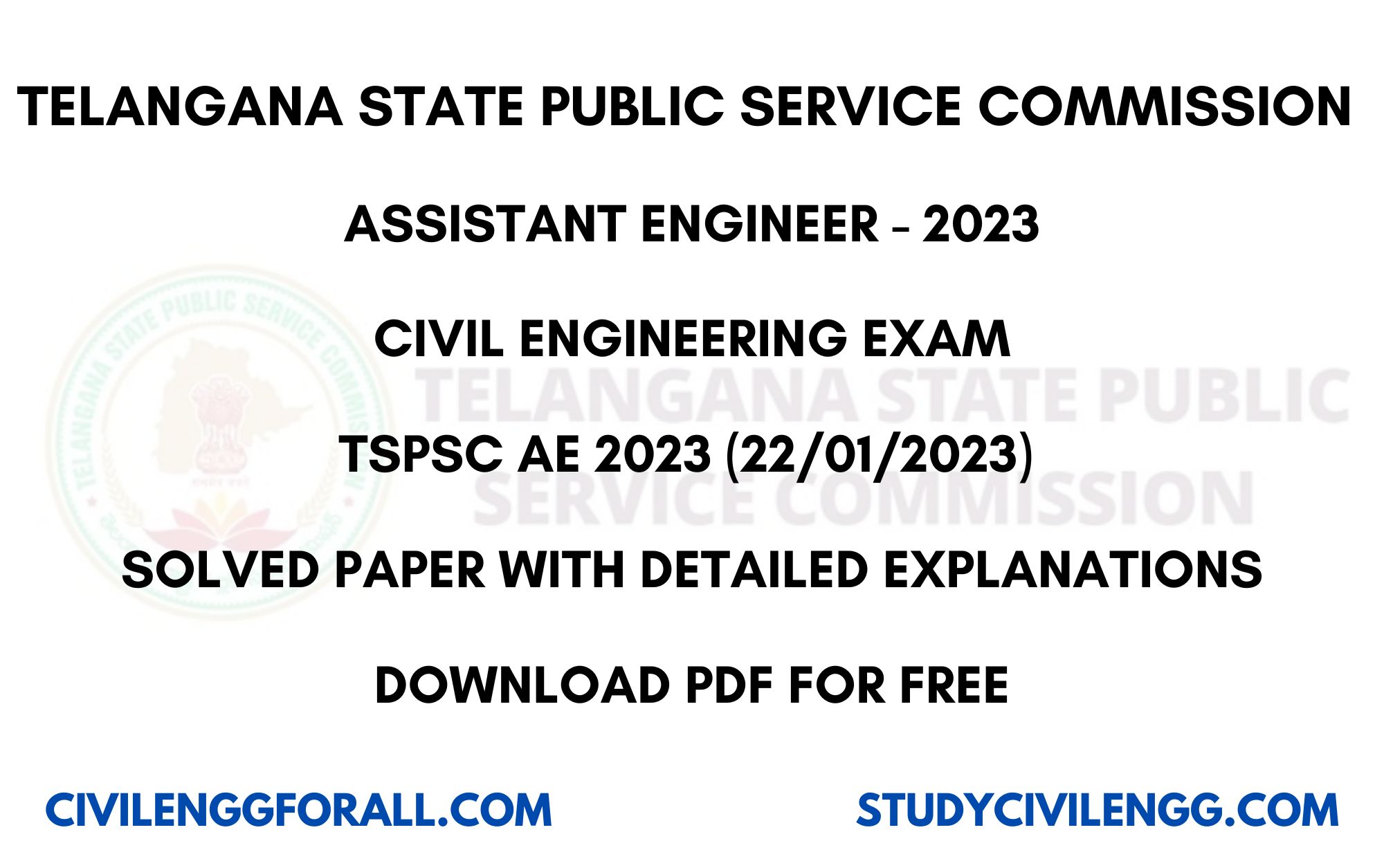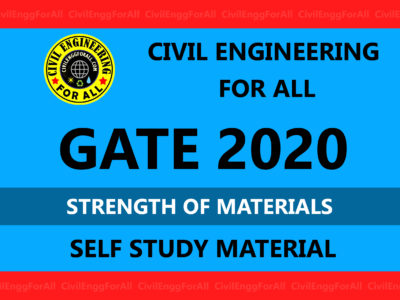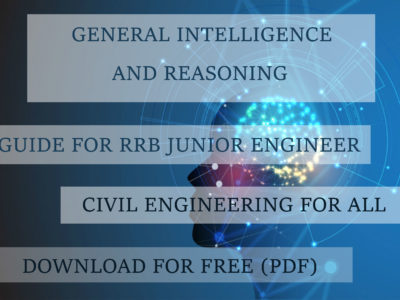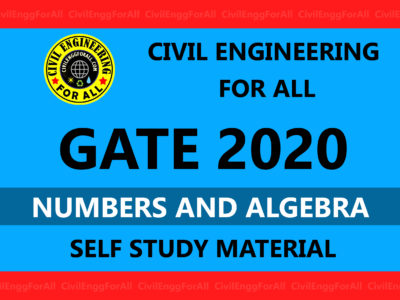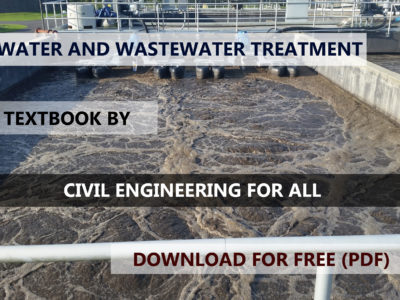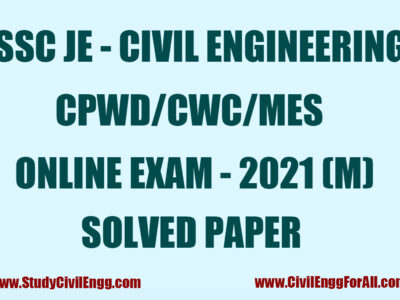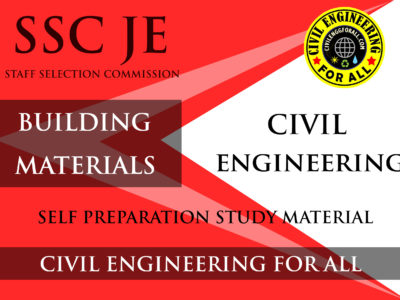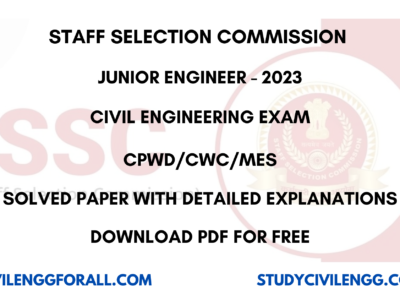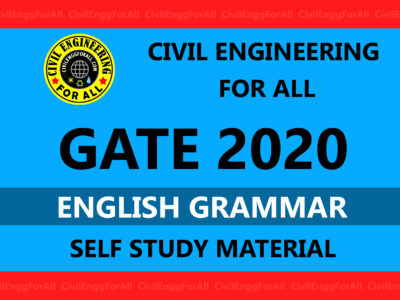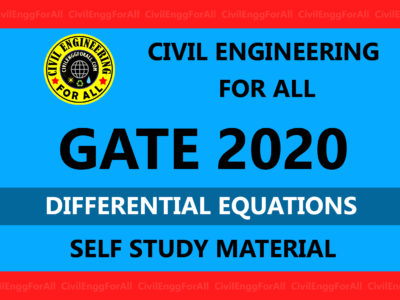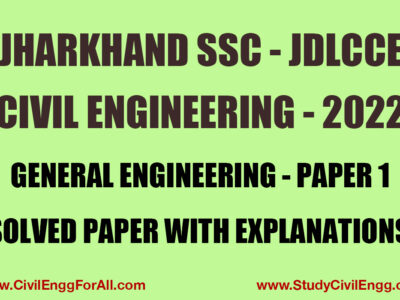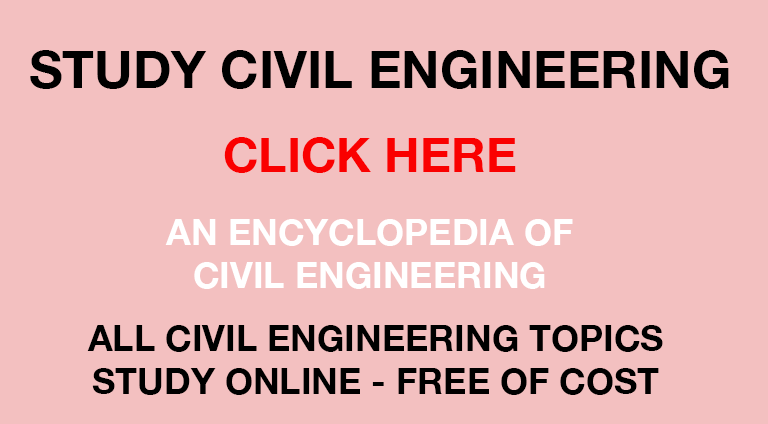TELANGANA STATE PUBLIC SERVICE COMMISSION
ASSISTANT ENGINEER EXAM – 2023
CIVIL ENGINEERING
SOLVED PAPER WITH EXPLANATIONS
FREE DOWNLOAD PDF
TSPSC (Telangana State Public Service Commission) Assistant Engineer exam in Civil Engineering in 2023, here are some general tips:
- Understand the Syllabus: Obtain the latest syllabus from the official TSPSC website or any other reliable source. Understand the topics and weightage assigned to each subject.
- Study Material: Gather quality study material including textbooks, reference books, and online resources that cover the entire syllabus comprehensively. Look for materials specifically tailored for TSPSC exams.
- Previous Year Papers: Solve previous year question papers to understand the exam pattern, types of questions asked, and the level of difficulty. This will also help you manage your time during the exam.
- Practice: Practice solving numerical problems regularly to improve your speed and accuracy. Civil engineering exams often involve a lot of calculations, so practice is keyRevision: Regularly revise the topics you’ve studied to ensure better retention. Create concise notes for quick revision before the exam.
- Mock Tests: Take mock tests and online quizzes to evaluate your preparation level. This will help you identify your weak areas and work on them accordingly.
- Stay Updated: Stay updated with the latest developments and advancements in the field of civil engineering. This includes new techniques, materials, and government regulations.
- Time Management: Develop effective time management skills to ensure that you can complete the exam within the given time frame. Allocate time to each section based on its weightage.
- Stay Healthy: Don’t ignore your health during preparation. Take regular breaks, eat healthy food, and get enough sleep to stay fresh and focused.
- Stay Confident: Believe in yourself and your preparation. Stay calm and confident during the exam. Remember, consistent and focused preparation is the key to success in any competitive exam. Good luck with your preparation for the TSPSC Assistant Engineer exam in Civil Engineering!
The syllabus for the TSPSC Assistant Engineer exam in Civil Engineering typically covers various subjects within the field. While specific details may vary slightly from year to year, here’s a general outline of what the syllabus might include:
Building Materials and Construction: Properties and uses of construction materials like stones, bricks, cement, concrete, timber, and steel. Different types of construction techniques, foundations, and building components.
Strength of Materials: Stress, strain, modulus of elasticity, bending moment and shear force diagrams, analysis of determinate and indeterminate structures, torsion, and deflection of beams.Structural Analysis: Analysis of determinate and indeterminate structures using various methods like the force method, displacement method, and matrix methods. Analysis of trusses, beams, frames, and arches.
Design of Concrete Structures: Principles and design of RCC and Prestressed concrete structures including beams, columns, slabs, and foundations. Limit state design concepts.
Design of Steel Structures: Principles and design of steel structures including beams, columns, roof trusses, and connections. Design of tension members, compression members, and beams.
Fluid Mechanics and Hydraulics: Properties of fluids, fluid statics, fluid kinematics, and dynamics. Flow through pipes, open channels, and hydraulic machines. Hydrology and water resources engineering.
Geotechnical Engineering: Soil mechanics, soil classification, properties of soil, effective stress, consolidation, compaction, and shear strength of soils. Foundation engineering and retaining structures.
Transportation Engineering: Principles of transportation engineering, highway materials, geometric design of highways, traffic engineering, and railway engineering.
Environmental Engineering: Water supply engineering, wastewater engineering, solid waste management, air pollution, and noise pollution.
Surveying: Principles of surveying, measurement of distances and angles, leveling, contouring, theodolite surveying, and total station.
Construction and Project Management: Construction planning, scheduling, and management. Cost estimation, tendering process, and project execution.General Aptitude and Reasoning: Questions to test the candidate’s logical and analytical abilities, as well as their proficiency in English.
Since studying of previous years questions is very important for preparation of exam, make use of our TSPSC AE 2023 Civil Engineering Solved Paper with Explanations PDF. Below you can find a few sample questions from ‘TSPSC AE 2023 Civil Engineering Solved Paper with Explanations PDF’
QUESTION 1 : Which method of Quarrying is suitable for costly, soft and stratified rocks?
(a) Excavating
(b) Heating
(c) Blasting
(d) Wedging
Ans. (d) : Wedging
- this method of quarrying is suitable ‘for costly. Soft and stratified rocks such as sandstone, lime stone, late rite, marble and slate.
- About 10-15 cm deep holes, at around 10 cm spacing, are made vertically in the rock
- steel pins and wedges or plugs (conical wedges) and feathers are inserted in them
- these plugs are then struck simultaneously with sledge hammer.
QUESTION 2 : The estimated value of the property at the end of its life period, without being dismantled is called as
(a) Salvage value
(c) Scrap value
(b) Book value
(d) Market value
Ans. (a) : Salvage value
- It is value at the end of utility period without being this dismantle.
- It is the value of asset at the end of utility period. It implies that asset has further utility but due to some reason it is selling.
QUESTION 8. Which of the following statements is/are correct for a plane stress isotropic material problem?
(a) A and C only
(b) A and D only
(c) D only
(d) B and D only
- Three stress components can exist at a point.
- Six stress components can exist at a point.
- Three principal stresses can exist at a point.
- Two principal stresses can exist at a point.
Ans. (b) : Isotropic material
- for an isotropic material, all planes are planes of material symmetry and are isotropic.
- there are 2 independent elastic constants associated with an isotropic material and 12 non zero terms in the stiffness matrix.
→ three stress components can exist at a point
→ two principal stresses can exist at a point
QUESTION 32. In long and short wall method of estimation, the length of long wall is the centre to centre distance between the walls and
(a) breadth of the wall on each side
(b) half the breadth of the wall on one side
(c) breadth of wall only on one side
(d) half breadth of wall on each side
Ans. (d) : In long and short wall method of estimation, the length of long wall is the centre to centre distance between the walls and half breadth of wall on each side.
DOWNLOAD LINK: TSPSC AE 2023 CIVIL ENGINEERING EXAM SOLVED PAPER PDF
PASSWORD: StudyCivilEngg.com
RELATED LINKS:
- SSC JE 2023 CIVIL ENGINEERING EXAM SOLVED PAPER PDF
- NHPC JE CIVIL ENGINEERING 2022 EXAM SOLVED PAPER PDF
- APPSC AEE CIVIL ENGINEERING 2022 EXAM SOLVED PAPER PDF
- MPSC ENGINEERING SERVICES 2011 CIVIL ENGINEERING EXAM SOLVED PAPER PDF
- RSSB JUNIOR ENGINEER DIPLOMA 2022 CIVIL ENGINEERING EXAM SOLVED PAPER PDF (HINDI & ENGLISH EDITIONS)
- ISRO TECHNICAL ASSISTANT 2022 CIVIL ENGINEERING EXAM SOLVED PAPER PDF (HINDI & ENGLISH)
